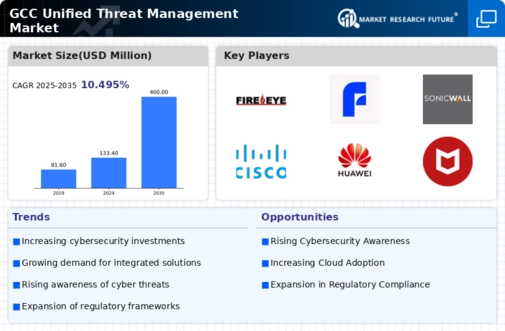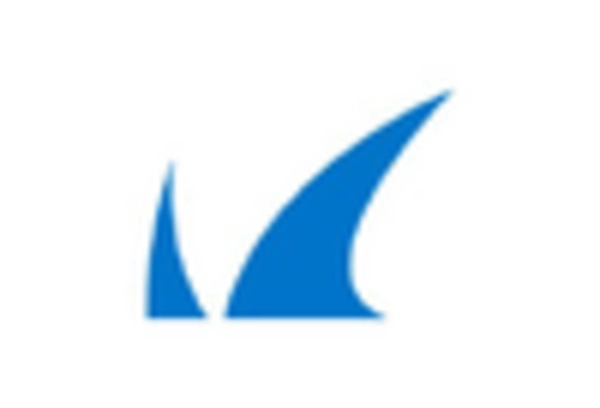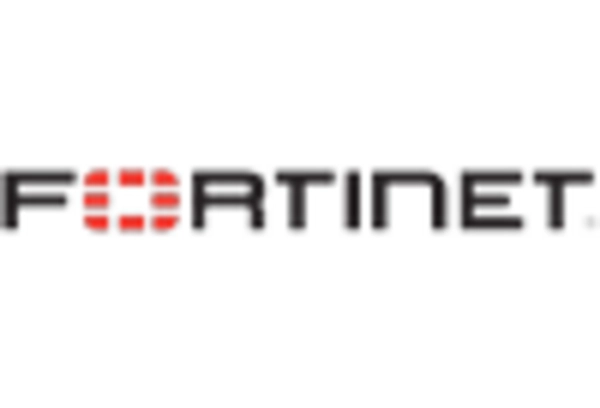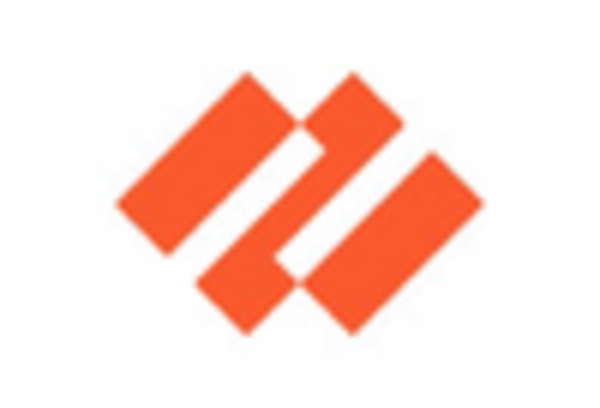Rising Cybersecurity Threats
The increasing frequency and sophistication of cyber threats in the GCC region is a primary driver for the unified threat-management market. Organizations are facing a surge in cyberattacks, including ransomware, phishing, and advanced persistent threats. This escalation necessitates robust security solutions that can integrate multiple security functions into a single platform. As a result, the demand for unified threat-management solutions is projected to grow significantly, with the market expected to reach approximately $1.5 billion by 2026. Companies are prioritizing investments in comprehensive security measures to protect sensitive data and maintain operational integrity, thereby propelling the unified threat-management market forward.
Growing Adoption of IoT Devices
The proliferation of Internet of Things (IoT) devices across various sectors in the GCC is driving the need for enhanced security solutions. As organizations increasingly deploy IoT technologies, the attack surface expands, making them more vulnerable to cyber threats. Unified threat-management solutions are essential for managing the security of these devices, ensuring that they are protected from unauthorized access and data breaches. The unified threat-management market is likely to benefit from this trend, as businesses seek integrated solutions that can provide visibility and control over their IoT environments. This shift is expected to contribute to a market growth rate of around 20% annually.
Increased Focus on Data Privacy
With the rise of data breaches and privacy concerns, organizations in the GCC are placing greater emphasis on data protection. The unified threat-management market is experiencing growth as companies seek solutions that not only secure their networks but also ensure compliance with data protection regulations. The implementation of stringent data privacy laws in the region is compelling businesses to adopt comprehensive security frameworks. This trend is likely to drive the market, as organizations invest in unified threat-management solutions that can help them navigate complex regulatory landscapes while safeguarding sensitive information. The market is projected to expand as companies prioritize data privacy in their security strategies.
Shift Towards Managed Security Services
The trend towards outsourcing security functions to managed service providers is influencing the unified threat-management market in the GCC. Organizations are increasingly recognizing the benefits of leveraging external expertise to manage their security needs. This shift allows companies to focus on their core business activities while ensuring that their security infrastructure is robust and up-to-date. Managed security services often incorporate unified threat-management solutions, providing clients with a comprehensive security framework. As more businesses opt for this model, the unified threat-management market is expected to expand, with a projected growth rate of around 18% as organizations seek reliable partners to enhance their security capabilities.
Demand for Cost-Effective Security Solutions
As organizations in the GCC strive to optimize their IT budgets, there is a growing demand for cost-effective security solutions. Unified threat-management systems offer a consolidated approach to security, reducing the need for multiple point solutions and associated costs. This economic advantage is appealing to businesses looking to enhance their security posture without incurring excessive expenses. The unified threat-management market is likely to see increased adoption as companies recognize the value of integrated solutions that provide comprehensive protection at a lower total cost of ownership. This trend may lead to a market growth rate of approximately 15% over the next few years.

















Leave a Comment